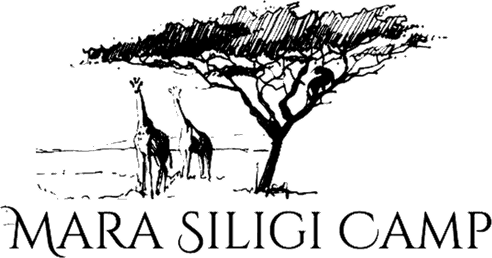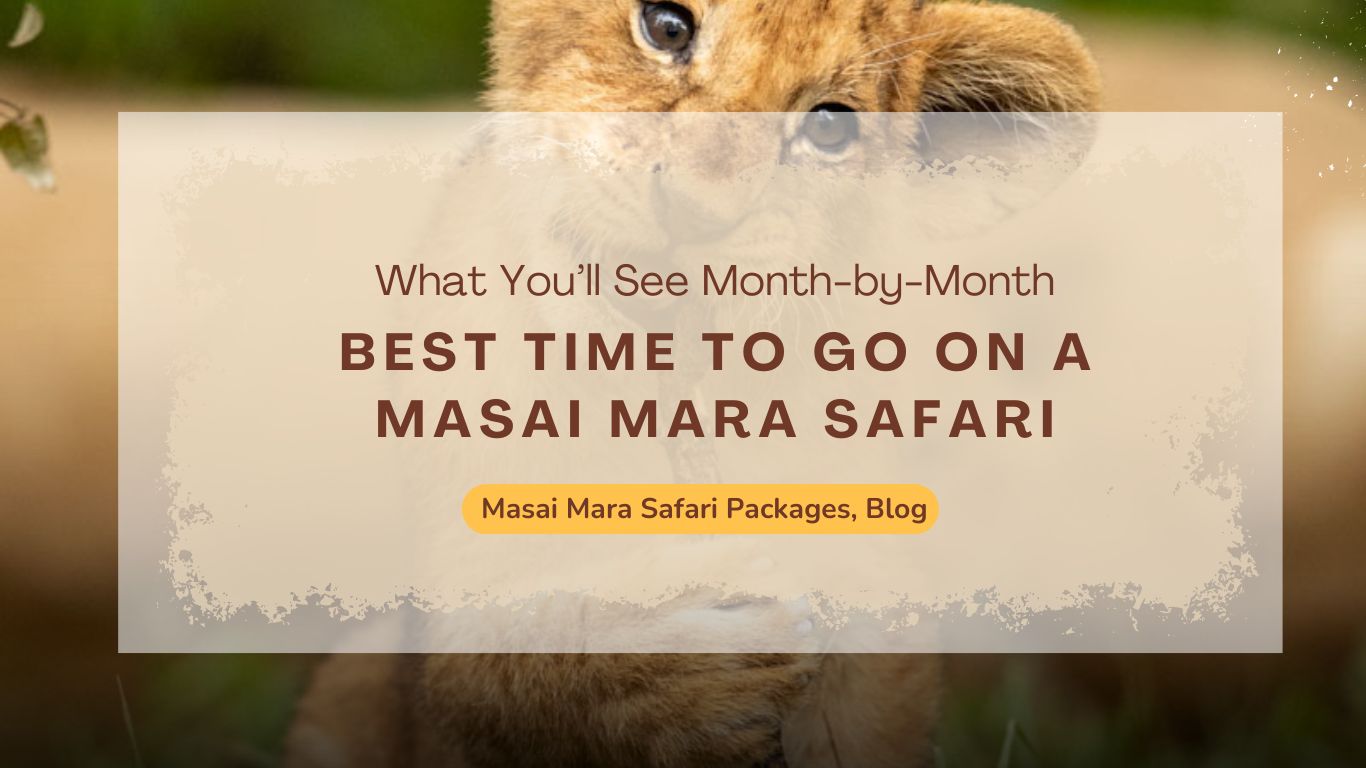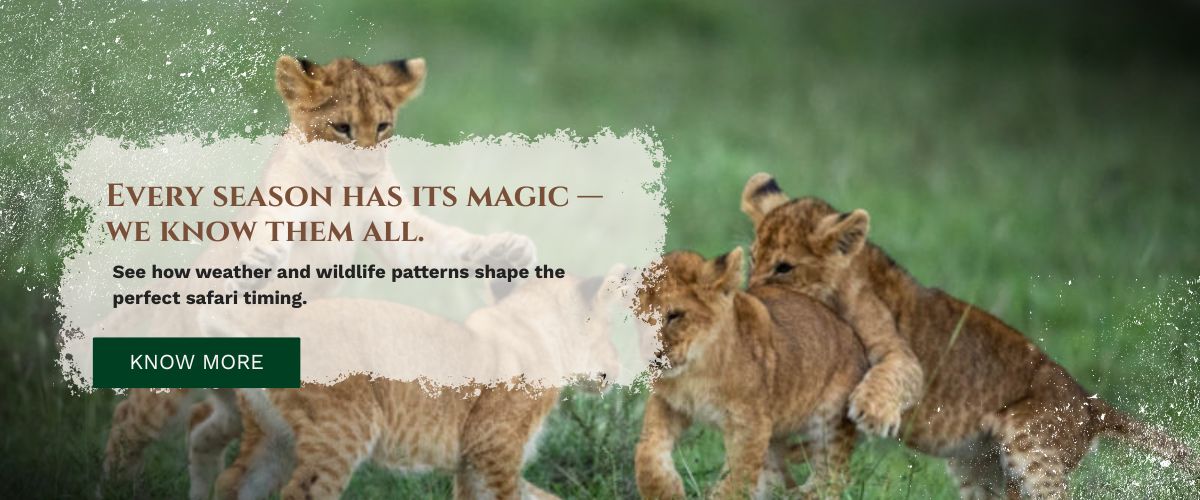Best Time to Go on a Masai Mara Safari
Planning your dream safari to Masai Mara? Timing is everything.
Whether you’re chasing the drama of the Great Migration or craving quiet golden hours with a camera in hand, the best time to go on a Masai Mara safari really depends on what you want from the experience.
At Mara Siligi Camp, we’ve hosted travellers during every season — from action-packed Augusts to peaceful green months in March. And here’s the truth: no two visits are ever the same, but each one can be unforgettable with the right planning.
In this guide, we’ll break down when to go based on wildlife, weather, crowds, pricing, and your personal travel style. So whether you’re comparing Masai Mara tour packages or curious about when to book your stay, you’ll leave with real insight — and a clear idea of what to expect.
Let’s help you pick your perfect safari window.
Table of Contents:
- What You’ll See Month-by-Month
- The Great Migration: Timing It Right
- When the Crowds Peak (And When They Don’t)
- Weather Patterns You Should Know
- Photography Seasons: Golden Light or Dust Storms?
- Traveling with Kids? Read This
- Budgeting by Season
- What I Personally Recommend
- Best Time to Book Masai Mara Safari Packages
- Final Take & Booking Advice
What You’ll See Month-by-Month
Choosing the best time to go on a Masai Mara safari really depends on what you want from the experience—whether it’s predator-prey drama, baby animals, birdwatching, or fewer crowds. Here’s a month-by-month breakdown of what you can expect:
January – March: Calving Season & Predator Sightings
This period marks the calving season in Masai Mara, when thousands of wildebeest and zebras give birth across the plains. With so many newborns around, predators like lions, cheetahs, and hyenas are never far behind.
It’s a quieter time in terms of tourism, making it one of the best months to visit Masai Mara for photography. The grass is still green from earlier rains, the skies are clear, and you’ll have more time and space during game drives.
April – May: Green Season with Dramatic Skies
The long rains arrive, turning the Masai Mara into a lush green wonderland. While it’s technically the low season for Masai Mara safaris, it’s still a beautiful time to visit. The rains usually come in the afternoon or evening, leaving the mornings perfect for game drives.
Wildlife is still easy to spot, and birdlife is abundant. You’ll find some of the most affordable Masai Mara safari packages during these months—ideal for budget-conscious travelers who don’t mind a bit of rain and want to escape the crowds.
June – July: Clear Skies & Pre-Migration Energy
As the rains taper off, the grasses shorten and visibility improves. June marks the start of the dry season in Masai Mara, offering ideal conditions for game viewing. It’s also when the first herds begin arriving from the Serengeti, signaling the start of the Great Migration build-up.
Expect fewer crowds than in peak months, and excellent sightings of big cats, elephants, and giraffes. This is a wonderful time for first-time safari-goers who want a bit of everything without peak-season pricing.
August – October: Peak Safari Season & Great Migration
This is the best time to witness the Great Migration in Masai Mara, especially the dramatic river crossings where wildebeest and zebras brave crocodile-infested waters. It’s a thrilling time for safari enthusiasts, with predators in full hunting mode and wildlife densities at their highest.
The weather is dry, the skies are blue, and the safari camps—especially those near the Mara River—are often fully booked. If you’re aiming for a Masai Mara luxury safari package during the Great Migration, be sure to plan and book well in advance.
November – December: Short Rains & Vibrant Birdlife
The short rains return, but they don’t last long and rarely disrupt safaris. In fact, this is one of the best times for birdwatching in Masai Mara, with migratory birds arriving and landscapes turning lush again.
Wildlife is still active, and tourist numbers begin to drop, making this a great window for travelers looking for a quiet Masai Mara safari with good wildlife sightings and lower rates. December also makes for a unique holiday safari experience.
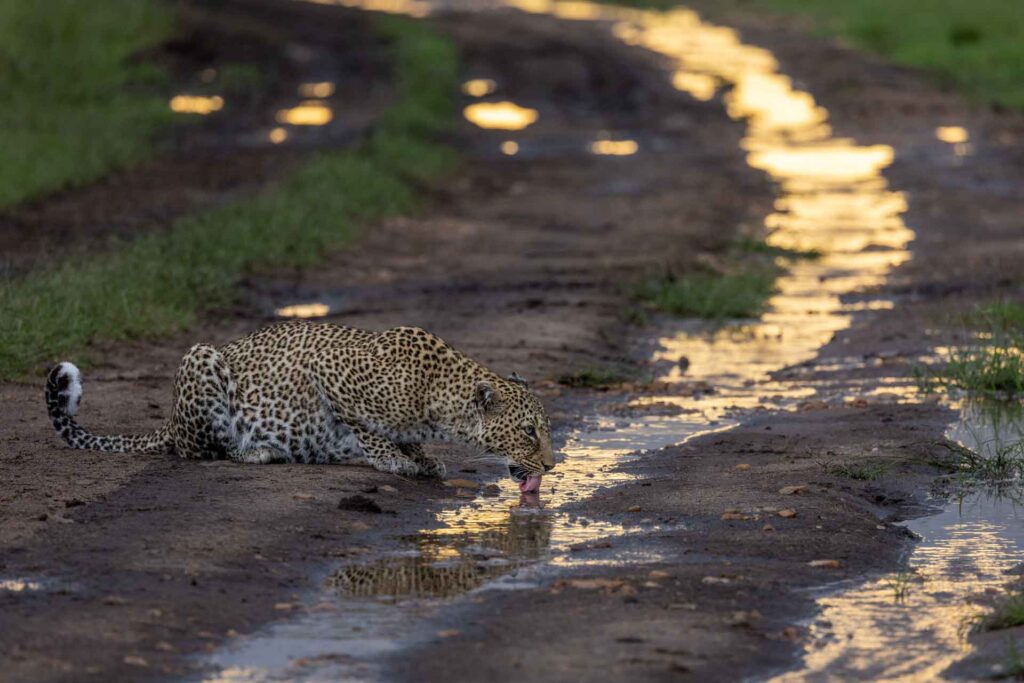
The Great Migration: Timing It Right
If your dream is to witness the Great Migration in Masai Mara, you’ll want to plan your safari for late July through September. During these peak months, over 1.5 million wildebeest, zebras, and gazelles thunder across the plains and brave the crocodile-filled waters of the Mara River—an unforgettable display of nature at its wildest.
This is by far the most popular time to visit Masai Mara, and for good reason. Watching a river crossing live is raw, emotional, and rare—sometimes it happens right in front of your game vehicle, sometimes not at all. That’s part of the magic.
That said, the migration doesn’t run on a fixed schedule. Since the animals follow rainfall patterns and grazing conditions, timing can shift slightly year to year. That’s why it’s important to book your Masai Mara safari package with a trusted camp or operator—especially one that knows how to adjust your itinerary on the ground.
For instance, Mara Siligi Camp works closely with experienced guides who track the herds daily and offer customized Masai Mara tour packages that align with the migration route—giving you the best possible chance to catch the action.
Quick Tips for Migration Planning:
- Aim for last week of July to mid-September for peak river crossings
- Book 4–6 months in advance—camps near the Mara River fill up fast
- Ask your operator about fly-in safaris for quicker access to prime locations
- Look for Masai Mara packages that include full-day drives for more flexibility
Whether you’re an amateur photographer, a wildlife enthusiast, or just chasing an adventure you’ll never forget—the Great Migration will leave you speechless.
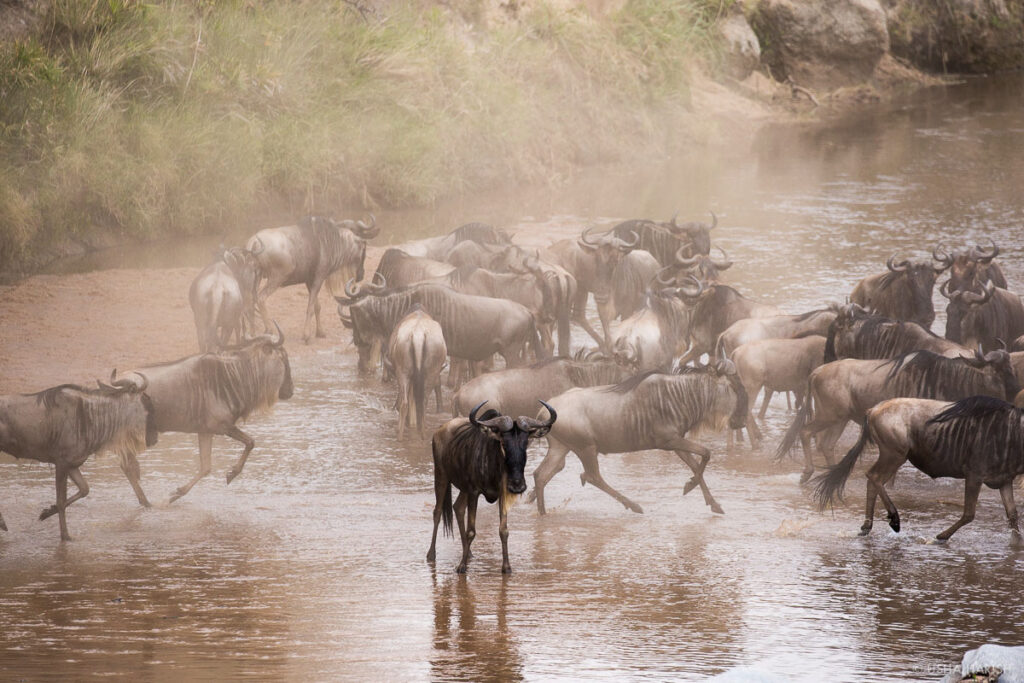

When the Crowds Peak (And When They Don’t)
One thing many travelers forget to consider when choosing the best time to go on a Masai Mara safari is crowd size. Depending on the month you visit, the experience can feel very different—not just in terms of wildlife, but also in the number of vehicles around you.
Peak Season (July–October)
This is the height of the Great Migration, and understandably, the busiest time of year in the Mara. Camps and lodges—especially well-located ones like Mara Siligi Camp—tend to be fully booked months in advance.
Expect vibrant sightings, but also more vehicles at popular spots like the Mara River crossing or big cat encounters. If this is your first safari and you don’t want to miss out on the Migration, this is your window—but plan well ahead.
Low Season (April–May)
These are the rainy months in the Masai Mara, often called the “green season.” It’s quieter, the savannah is lush and dramatic, and rates for Masai Mara safari packages are significantly lower.
Wildlife is still active, and birdwatching is excellent. If you’re okay with a few muddy tracks and are looking for affordable Masai Mara tour packages, this season is a hidden gem.
Shoulder Season (November–June, excluding April–May)
This stretch includes some of the most underrated months to visit the Masai Mara. Think: fewer crowds, great visibility, and a mix of wildlife and birding opportunities.
March, June, or early November are particularly sweet spots—they offer that middle ground between peak sightings and peaceful drives. At Mara Siligi Camp, we often recommend these months to guests who want a more intimate experience with nature.
What to Keep in Mind:
- Book well in advance for July–September Masai Mara packages
- Ask about off-season rates if you’re traveling in April or May
- Consider shoulder season safaris for fewer crowds and more relaxed drives
No matter when you go, a private vehicle can make a big difference in comfort and sightings
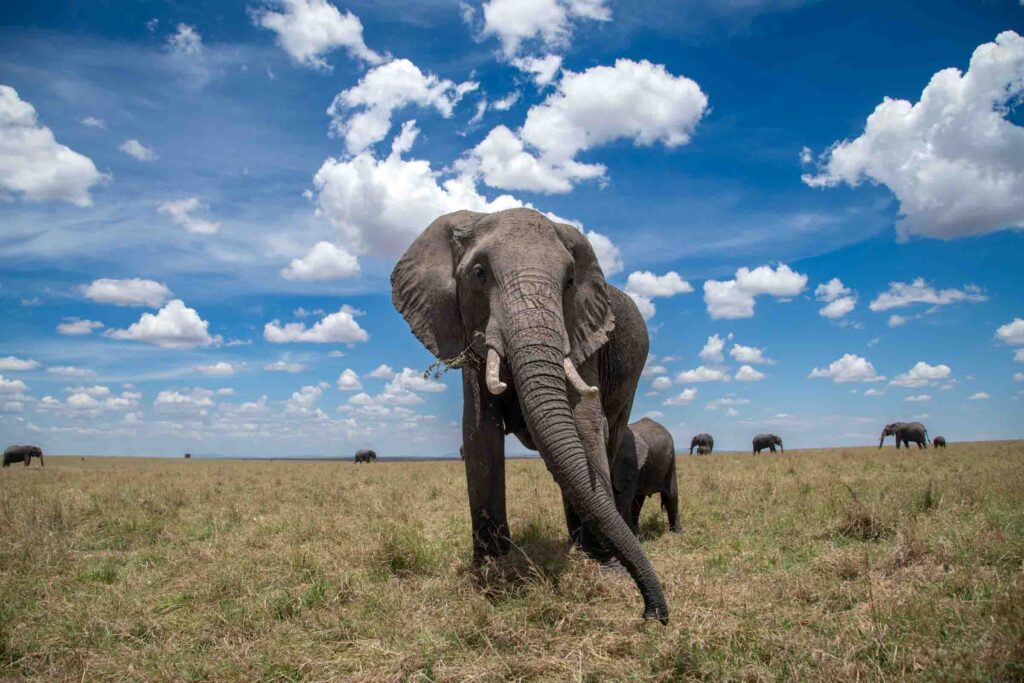

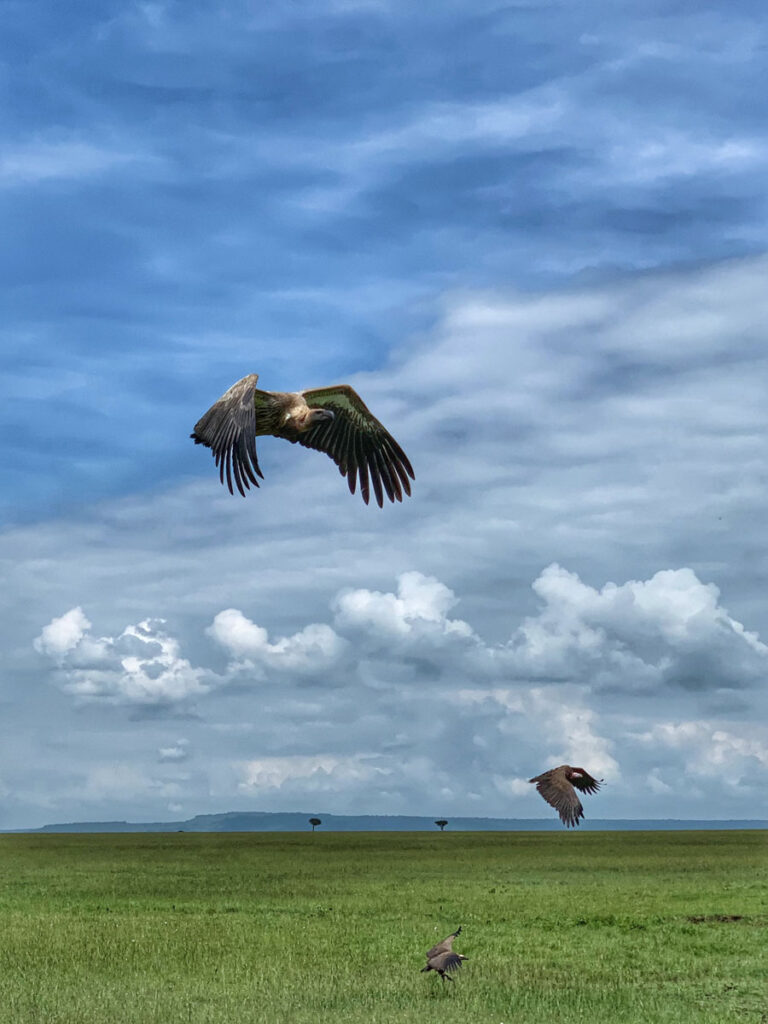
Weather Patterns You Should Know
When planning your Masai Mara safari, it’s smart to understand the region’s weather. Thanks to its high elevation, the Masai Mara enjoys a relatively mild climate all year—cool mornings, warm afternoons, and crisp evenings. Still, the conditions shift with the seasons, and knowing what to expect can help you pack better and choose the right safari experience.
Dry Season (June to October)
This is the most popular time for safaris—and for good reason. The skies are clear, the grass is short, and wildlife tends to gather around water sources, making game viewing easier.
Expect cool mornings (perfect for early drives) and sunny, pleasant days. This period aligns with the Great Migration, so it’s a great choice for travelers booking Masai Mara tour packages focused on wildlife sightings.
Short Rains (November to early December)
Rain usually comes in short bursts, often in the late afternoon or evening. The landscape starts turning green again, and it’s an excellent time for photographers and bird lovers.
Camps like Mara Siligi Camp stay open and active during this period, and you’ll often find discounted Masai Mara packages without compromising on the overall experience.
Long Rains (April and May)
This is the true wet season in the Mara. Afternoon storms are more common, and some roads may become muddy or challenging to navigate. That said, the scenery is at its most dramatic—lush, green, and alive with activity.
If you’re seeking affordable Masai Mara safari packages and don’t mind a little adventure, this is the time to go. Plus, it’s quieter—fewer vehicles, fewer people, and still plenty of wildlife.
What to Pack, Weather-Wise:
- Layered clothing for chilly mornings and warm afternoons
- A waterproof jacket if traveling during the rainy months
- Hat, sunscreen, and sunglasses—UV is strong even when it’s cool
- Comfortable walking shoes, especially for camp walks or sundowners
No matter the season, the Mara has its own kind of magic. We’ve had guests spot leopards in the rain and witness breathtaking sunsets in the dry wind. Just come prepared—and let nature do the rest.
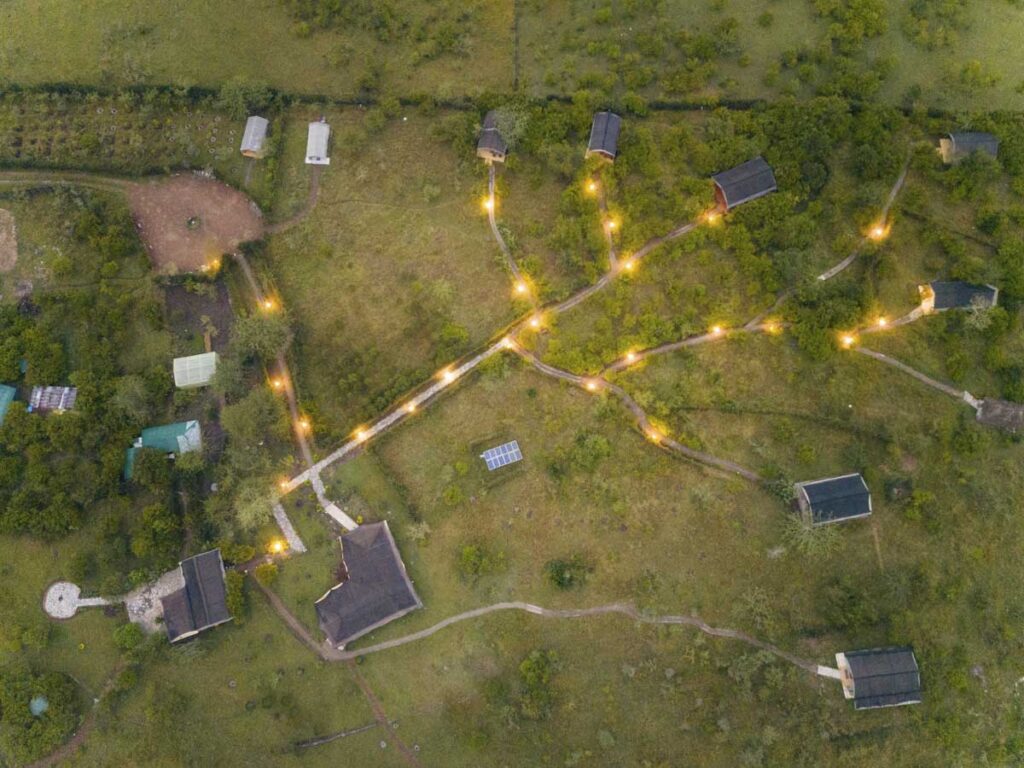
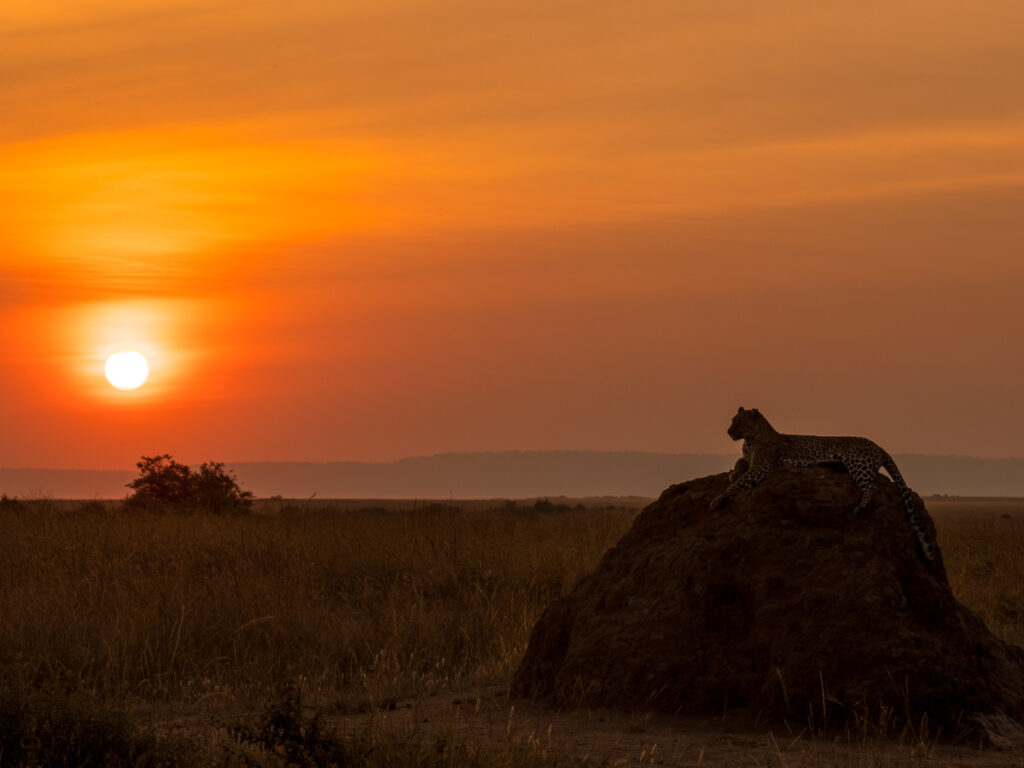
Picking the Right Camp or Lodge
Choosing where to stay in the Masai Mara can make or break your safari. With so many camps and lodges available, the key is finding one that fits your pace, purpose, and people. Whether you’re booking Masai Mara safari packages for your honeymoon, family trip, or photography tour, here are a few things to keep in mind:
What to Consider:
- Location: Camps located inside or close to the main reserve gates mean shorter drives to wildlife sightings—and more time in the bush
- Group Size: Intimate, low-capacity camps often feel more personal and peaceful
- Safari Inclusions: Look for packages that clearly list game drives, Maasai village visits, walking safaris, or birdwatching tours
- Amenities: If you’re into photography or need to stay connected, check for reliable power, charging points, and flexible dining hours
Different camps offer different vibes—some focus on rustic charm, others on boutique luxury. The best Masai Mara tour packages are the ones that align both your safari goals and your downtime comfort.
Photography Seasons: Golden Light or Dust Storms?
If you’re planning your Masai Mara safari with photography in mind, timing makes a big difference. Whether you’re carrying a DSLR or just a phone with a good zoom, knowing when the Mara is most photogenic can help you make the most of your shots.
Dry Season (July–October):
- Think sharp images with golden light.
- The grass is low, so animals are easier to spot and frame.
- Predator-prey interactions are more common—ideal for action shots.
- Dust in the air can create cinematic sunsets (and yes, a few lens wipes).
This season is popular for travelers booking Masai Mara safari packages focused on wildlife photography.
Green Season (January–March):
- The park is lush and green, with dramatic backdrops and rich color contrast.
- Fewer vehicles means cleaner compositions—no 4×4 photobombs!
- Calving season means baby animals everywhere—a dream for wildlife photographers.
- Lighting is softer, especially in early mornings and late afternoons.
Bonus: Birdwatching Season (November–April)
If you’re into avian photography, this is your time. Migratory birds flock to the Mara, adding a whole new layer of beauty. From colorful bee-eaters to elegant raptors, there’s something for every kind of bird enthusiast. Many Masai Mara tour packages now offer birdwatching extensions during these months.
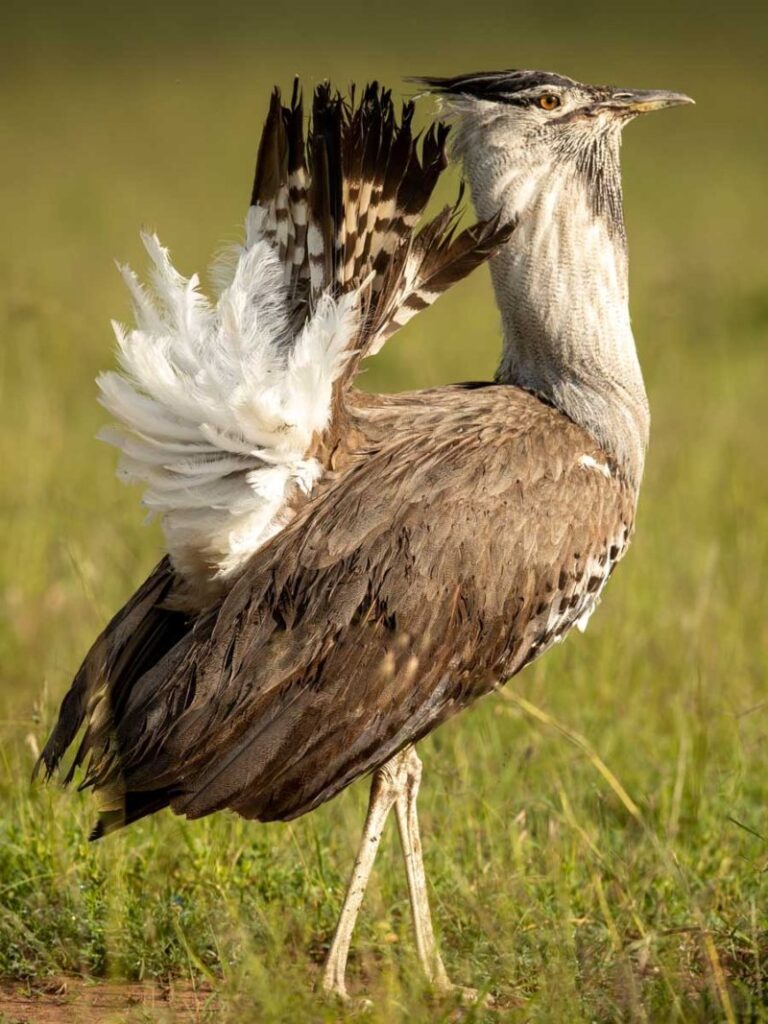
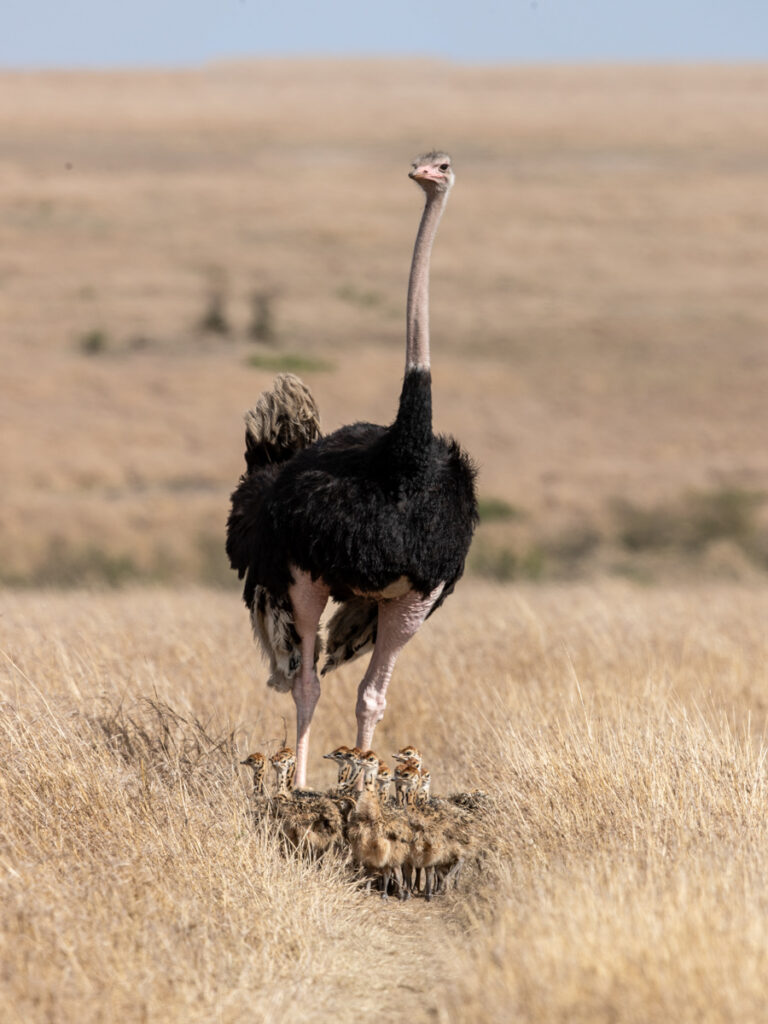
Traveling with Kids? Read This First
Safaris aren’t just for adults—and with the right planning, a Masai Mara adventure can be unforgettable for kids too. But the experience will vary a lot depending on the time of year.
Best Time for Families:
June–October is often the easiest time to travel with children:
- Fewer mosquitoes
- Cooler temperatures
- Drier, smoother roads (ideal for bumpy drive-sensitive tummies)
- Consistent game viewing, which keeps the kids engaged
You’ll also find that many camps, including Mara Siligi Camp, cater to families with optional private game drives, early meals, and guides who know how to keep things fun and safe.
Alternative Option: Calving Season (January–March)
If your kids are animal lovers and you want a more relaxed safari with fewer crowds, consider the calving season:
- Young animals everywhere (think baby wildebeest wobbling beside their moms)
- Softer light for photos and more comfortable game drives
- Plenty of predators around—but less vehicle traffic
Just make sure to choose Masai Mara packages that include family-friendly accommodations and flexibility in daily itineraries.
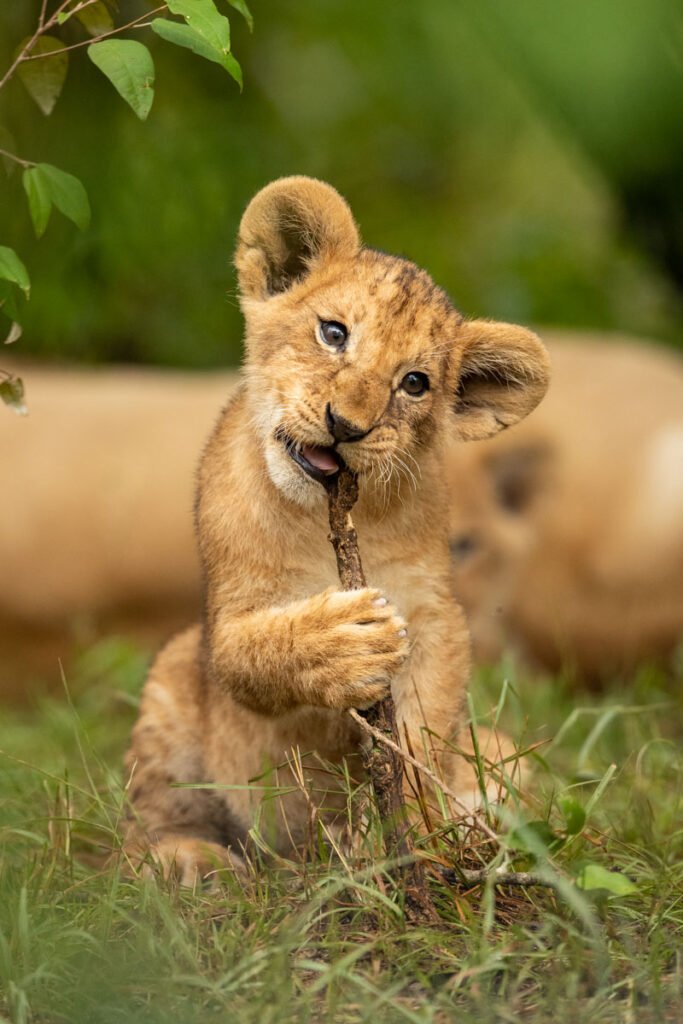
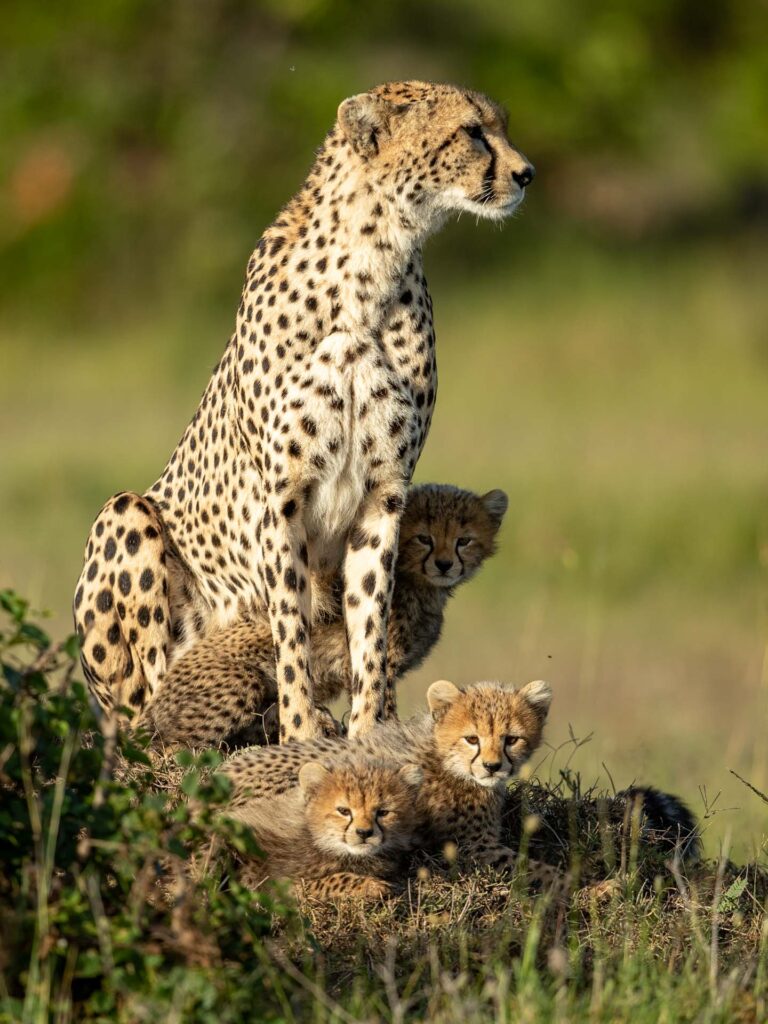
Budgeting by Season
One of the most common questions I get is: “When is the best time to visit Masai Mara without breaking the bank?” The answer? It really depends on what kind of experience you’re looking for — and how flexible you are.
Let’s break it down:
High Season (July–October):
- This is when most Masai Mara safari packages are at their priciest.
- Lodges near the Mara River (where the migration action happens) are in especially high demand.
- If you’re coming during this time, expect premium rates for everything—from park fees to camp stays.
Low Season (April–May):
- The rains might show up, but so do the savings.
- Expect major discounts on Masai Mara packages, and a quieter reserve overall.
- If you’re okay with a little unpredictability in the weather, it’s a great time to experience the Mara for less.
Shoulder Season (November–June):
- This is my personal budgeting sweet spot.
- You’ll find moderate pricing, fewer tourists, and great wildlife viewing—especially in early November or March.
- Some boutique camps (yes, like ours at Mara Siligi Camp) offer flexible rates and personalized safari options no matter the season.
Pro tip: If you’re working with a specific budget, look for packages that bundle meals, game drives, park fees, and airport transfers. Many Masai Mara tour packages are all-inclusive—you just need to know where to look.
What I Personally Recommend
People often ask, “If you could go any time of year, when would it be?”
Honestly, it’s hard to pick one, but here’s how I see it:
- Late June or early October: A hidden gem. The wildlife is spectacular, the crowds are manageable, and the rates haven’t hit full peak.
- August: If it’s your first time and you want to see the famous river crossings during the Great Migration, this is your window. It’s dramatic, chaotic, and absolutely unforgettable.
- March or November: Ideal for photographers, birdwatchers, and anyone looking for a quieter, more atmospheric safari.
The truth is, there’s no wrong time to visit. Every month in the Mara tells a different story — from newborn antelope in March to thundering wildebeest herds in July. You just have to choose the version of the Mara that speaks to you.
Best Time to Book Masai Mara Safari Packages
Planning ahead really pays off—especially during the peak months. Here’s a quick guide:
If You’re Visiting During:
- Peak Season (July–Oct): Book 3–4 months in advance to lock in your preferred camps and guides. Popular places like Mara Siligi Camp fill up fast.
- Green Season (Jan–March or Nov–Dec): You can often snag last-minute deals. Plus, flexible travelers might even get free room upgrades.
- Custom or private safaris: No matter the season, book early. Whether you’re celebrating a honeymoon, anniversary, or just want to enjoy the bush in privacy—early planning means better choices and better guides.
Make sure your chosen Masai Mara package includes essentials:
- Park fees
- All meals
- Airport pick-up & drop-off
- Your preferred game drive schedule (half-day or full-day options)
Some add-ons you can request:
- Sundowner set-ups (trust me, sunset G&Ts in the wild are next-level)
- Hot air balloon safaris
- Night drives or village visits
Final Take & Booking Advice
There’s no one-size-fits-all answer to “When’s the best time to visit Masai Mara?” — because there’s no wrong time. Each season reveals a different side of the Mara:
Action-packed safaris during the Great Migration
Vibrant, peaceful landscapes perfect for photographers
Budget-friendly packages during the quieter months
So instead of asking when’s best, ask: what kind of experience do I want?
- Want adrenaline and drama? Choose July to September.
- Want privacy and lush backdrops? Try March or November.
- Want to save while still seeing tons of wildlife? Low and shoulder seasons deliver.
Whether you’re eyeing a classic safari or a customized stay at Mara Siligi Camp, the key is to book based on your priorities — not the crowd.
Still deciding? Let us help.
We’ll walk you through the best Masai Mara tour packages, pick the right season for your style, and help plan every last detail — from game drives to sunset drinks.
Drop us a message. Your dream safari is closer than you think.
